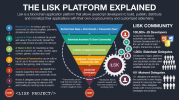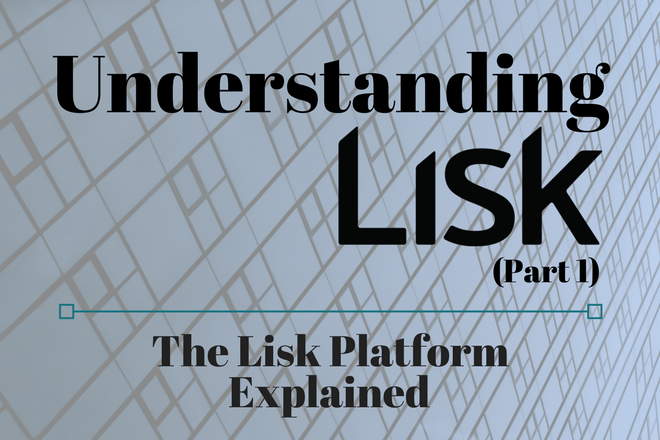Lisk has been in the news a lot lately and they’ve also announced that their rebrand will be launched in February.
If recent developments have left you sitting on the fence or feeling some doubt, perhaps a little review is in order. Or maybe you’re new to Lisk and want a thumbnail explanation of its core components.
In either case, you’re in luck.
Cue Kylefromohio, a Reddit user (and current Lisk Delegate candidate) who produced a brilliant overview infographic. In this four-part series, we’ve taken the infographic, chopped it into pieces, dissected it and laid out its expanded contents clearly.
In the first installment, we talk about the backbone of Lisk: its platform.
Lisk Platform Basics
Lisk is a blockchain application platform designed to allow developers to create their own decentralized apps (Dapps) – similar in function to Ethereum or NEO. It allows Java developers to build Dapps on fully customizable “sidechains”.
For those who want a more comprehensive explanation, check out this article or the Lisk whitepaper. For everyone else, here is the infographic and a few more details.

Firstly, what is Lisk doing differently?
Blockchain is hard to understand, the usability/UX sucks and therefore it’s hard to build your own blockchain project. Also, scaling is a huge issue. Consider the start button at the bottom as where Lisk began trying to address some of these problems.
As the inverted pyramid above shows, Lisk relies on its nodes and a consensus algorithm called Delegated Proof of Stake (DPoS – definite special sauce, more on that later!). DPoS provides an incentive for securing the network and also provides critical funding for new projects.
In sections 2 and 3 of the pyramid, you have Javascript developers building new platforms/frameworks or applications (a few early examples are MADANA and Sapiens Project) on sidechains next to the Lisk mainchain.
Having a hard time conceptualizing this? The Lisk blog uses the metaphor of their ecosystem as a city and it’s an apt one.
Think of the initial Lisk blockchain as an avenue; sidechains are smaller streets and driveways and applications are houses. Developers are the contractors building this city, and they’re incentivized through transactions fees and network rewards.
Common users are the people who will live in the city and use its infrastructure. Which takes us to steps 4 and 5, where a community starts to grow and developers are paid to help build/populate this new city.
At the very top of the pyramid, you have users who will also be rewarded for tracking payments and donations. These users will also be attracted by the development of valuable applications.
As the whole ecosystem grows, there will be increasing utility for these type of users. There is some interesting speculation in this vein on Reddit.
If Lisk can get more on the more positive side of the network effect, look out!

The Lisk Community
On the right side of the infographic, you have another integral part of Lisk: its community.
A platform without a community like an empty pub or a discarded tool belt. The 100,000+ developers mentioned in the infographic is, at the moment, speculative. The Lisk SDK is still unreleased but it’s safe to say there are a ton of developers chomping at the bit.
As the groundwork is laid for a flourishing ecosystem, Lisk envisions a large group of “sidechain delegates” as part of their community. These people will be developers or promoters of new applications or frameworks and can tap into existing delegate pools.
Lastly, there are 101 “mainnet” delegates who are active users confirming transactions through DPoS forging. Similar to bitcoin mining, these delegates are incentivized to compete against each other to stay in the top 101, and to make things faster/more secure.
These delegates are elected, through a voting system, by everyone holding LSK and they have a good deal of power in terms of what projects or campaigns receive funding. Voting can be done once or as often as you want (but there is a fee). An exhaustive FAQ regarding Lisk delegate voting can be found here.
Summary
The Lisk platform and community has the potential for epic growth, but it’s still early days. To see if its founders can deliver on their promise, more time is needed. There is also quite a bit more to Lisk that merits explanation.
Next, we shine a spotlight on Lisk’s Delegated Proof of Stake.

